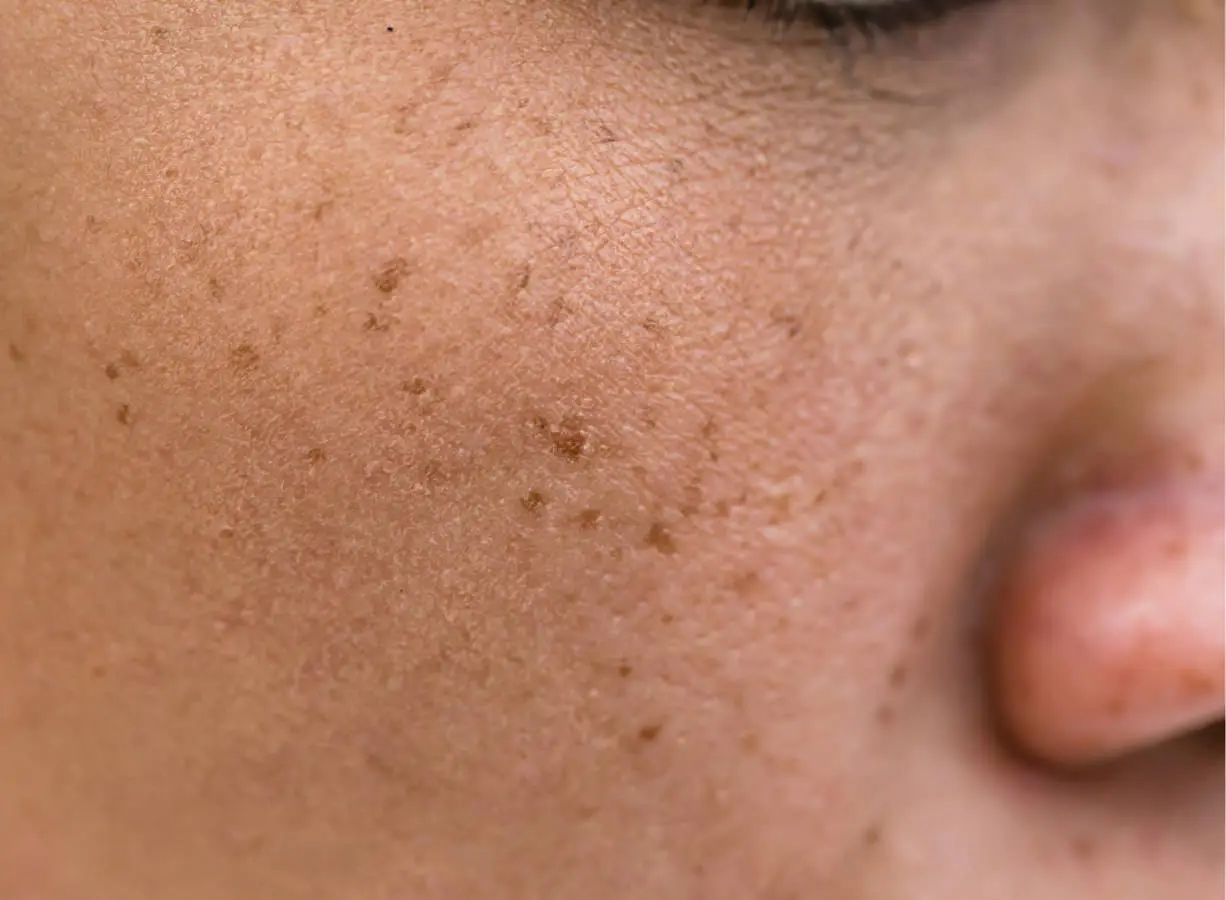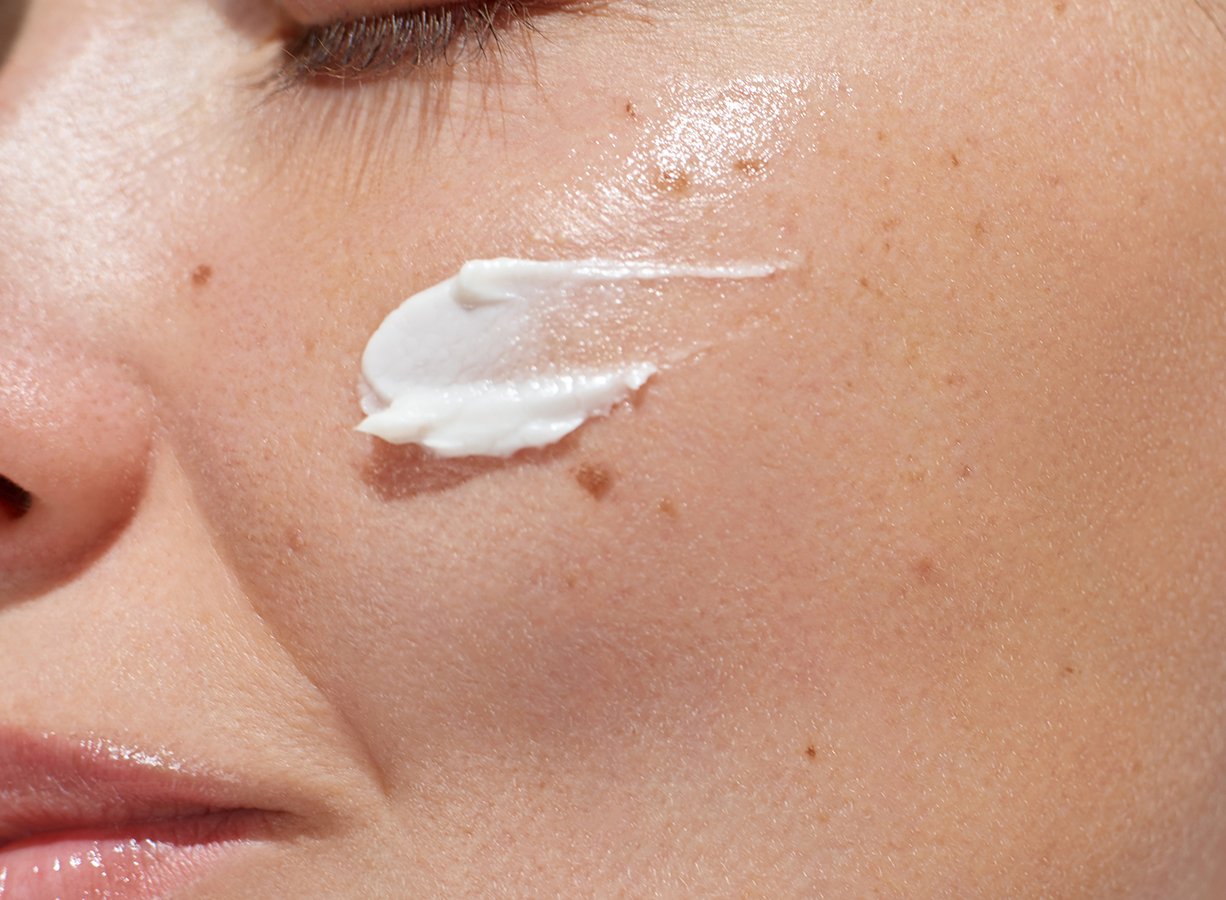Melasma: How To Get It In Check
Melasma... the struggle is real. I hate to break it to you, but it's not going away (forever).
December 8, 2023

There's a multitude of ways to decrease the appearance and I am here to give you some great options and provide proof that you can improve it. For years, I have had friends and family say, “I thought that was a tan around your sunglasses”. Whether I wear sunglasses or not, when my face is in the sun I will end up with patches of hyperpigmentation under my eyes that stretch across both cheeks. But the dark patches don’t stop there. They continue on either side of my forehead, above my eyebrows, and my top lip. Trust me, I share your frustrations.
It is a very common, acquired skin condition that is frustrating and although asymptomatic, may cause significant emotional distress for those who have to deal with it. Thankfully there are an array of treatments that can help reduce the appearance of melasma and we just happen to perform and carry them at Ject. Prior to using these various therapies and getting really serious about sunscreen, I had been struggling with melasma and the effects of sun damage for over a decade. Over the past 2 years, I have been able to get my melasma in check and I am here to help you do it too!
The appearance of melasma develops from the overactivity of melanocytes, which are the cells that create melanin and give us pigment in our skin. This overactivity of melanin shows up as dark patches on the skin. It is typically seen as symmetrical hyperpigmentation on the cheeks, nose, upper lip, brows, and forehead. The symmetry is what makes it look “mask-like”. The pigmented areas are flat with irregular borders and vary in color from light and dark brown, to blue or gray. It is most commonly seen in women, those with a familial history, and those with darker skin tones.
The cause of it is not entirely clear but there are known triggers. Sun exposure is a biggie. UV light from the sun and heat stimulate melanocytes and unfortunately will bring out melasma year after year (even if you think it’s gone). I can personally attest to being completely covered with a hat and sunscreen, assuming I am doing all of the right things, only to come inside and discover the heat has gotten me and my melasma has darkened. There is also research indicating that it can be exacerbated by fluorescent and blue light, which is why it’s so important to wear sunscreen while indoors and on a cloudy day. Fluctuations in hormones from thyroid disease, hormone birth control, hormone supplement therapy, and pregnancy will also trigger melasma, hence, “the mask of pregnancy”.
Melasma may go hand in hand with sun damage but it is important to distinguish between the two conditions for treatment purposes. Sun damage can appear anywhere on the face, neck, chest, or any skin on the body that has been exposed to UV damage. It is not symmetrical and will have a very defined border. The pigment is light brown to brown and does not typically change. The melanocytes in melasma are more reactive and some treatments for reducing the appearance of sun damage may make melasma worse. Take laser therapy, for example, it is important to use a melanin inhibitor such as hydroquinone or azelaic acid before, during, and after laser therapy to prevent melanocytes from overreacting. It is best to see a medical professional to diagnose any skin condition and answer any questions you may have.
It’s important to address melasma from different angles and understand that it may get worse before it gets better. I started to gain control by using physical sunscreens that contained zinc and titanium dioxide as well as keep my face out of the sun with cute hats (insert a link to ject hat). When I realized that wasn’t enough, I began using medical-grade products containing melanin inhibitors to slow melanin production, vitamin C to brighten my complexion, and retinol to increase skin cell turnover. I shed superficial skin cells by applying a chemical peel every few months and I carefully treat with Intense Pulse Light (IPL) therapy that is specific to skin rejuvenation and hyperpigmentation in the fall and winter. I am continuously treating the appearance of my melasma because there is no quick fix or cure and it has become a part of my daily routine.
If any of this sounds familiar to you, please come in to see me and we can create a personalized treatment plan to manage your melasma. Myself and the team at Ject are here to see you through this and motivate you to reduce the appearance of your hyperpigmentation. It is a frustrating skin condition that many of us deal with. But please remember, you are not alone.
Below are various therapies and products that will help with melasma and/or sun damage.
TREATMENTS FOR HYPERPIGMENTATION
IPL therapy: Intense Pulsed Light (IPL) targets hyperpigmentation and has minimal to no downtime.
Skin resurfacing with radio frequency: FDA cleared device is a fractionated laser that allows for skin resurfacing to create a new surface to decrease fine lines, wrinkles, and enlarged pores. It heats the deeper layers of the skin promoting the body to create new cells and improve skin texture and tone, pigmentation, and deep scarring.
Medical-grade facials: Ject carries various in-office medical-grade chemical peels that address hyperpigmentation and brighten skin.
VIPeel Precision Plus: A blend of Trichloroacetic Acid (TCA), Tretinoin Acid, Salicylic Acid, Phenol, Vitamin C, and other minerals work together to safely remove the damaged layers of the skin, promote cellular turnover, and refine the surface layer for a smoother, clearer, firmer skin that has a more youthful and radiant appearance.
PRODUCTS FOR HYPERPIGMENTATION:
JECT Brightening Kit: The active ingredient in these pads is prescription strength Hydroquinone. Hydroquinone decreases the formation of melanin in the skin and is used to lighten dark patches and hyperpigmentation. This is perfect for anyone looking to treat or reverse melasma, chloasma, dark spots, sun spots, or freckles. It also contains other melanin inhibitors such as Kojic Acid, Arbutin, Bearberry, Green Tea Polyphenols, Vitamin C, Emblica, and Silybum.
JECT Everyday Sunscreen: This physical sunscreen protects the skin with zinc oxide providing SPF 50 coverage. Physical sunscreens are best for melasma because they deflect the UV rays. This blend of zinc oxide with other key ingredients like Vitamin A, C, and E gives a sheer beautiful coverage while also moisturizing the skin.
Glytone Enhance Brightening Complex: This is a hydroquinone-free cream that allows you to minimize the appearance of unwanted dark spots. The formula features a potent blend of antioxidants to help brighten skin and protect it against future sun damage. A 3% concentration of glycolic acid and 12% azelaic acid help to gently exfoliate and inhibit the production of pigment at the surface level. The result is a smoother, more resilient complexion with a more even tone.
Glytone Enhance Brightening Solution: This liquid toner brightens dark spots and exfoliates while prepping skin for other treatments in your skincare regimen by restoring pH balance. It leaves pores unclogged with glycolic acid and salicylic acid while an azelaic acid derivative and niacinamide improve the appearance of discoloration.


